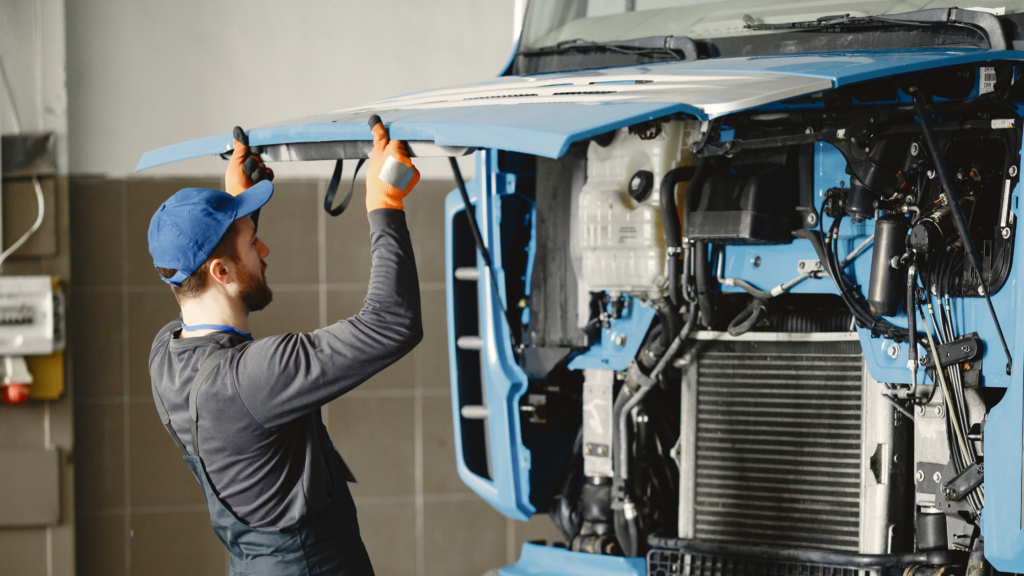How to Get Drivers on Board with Your Preventive Maintenance Program

Your drivers and supervisors should already know that preventive maintenance is key to reducing excessive downtime. Yet, they still repeatedly delay preventive maintenance because of prior experiences and misperceptions.
People commonly believe that giving up their vehicles to the maintenance shop will result in delays that should be avoided at all costs. After all, those delays make it difficult (if not impossible) for them to meet their performance goals.
Ironically, these beliefs are reinforced by service delays that wind up happening because they skip PM checks.
You could break this cycle if only you could get drivers and supervisors to prioritize preventive maintenance. But where do you begin?
4 Ways to Improve PM Compliance
Achieving high PM compliance rates takes a team approach among drivers and mechanics. This approach should be built on communication, flexibility, and education.
With the right tools and systems in place, you should be able to get everyone on board with your preventive maintenance program.
1. Send Advanced PM Reminders.
The first step is to communicate with everyone in advance. Remind your drivers and their supervisors when required PM checks are coming due. Give them plenty of advanced notice. And remind them more than once.
Your FMIS should help you accomplish this by scheduling automatic alert notifications to go to drivers and supervisors.
- Try email, text, and push notifications. You can even ask drivers what types of notifications they prefer.
- Schedule 2-3 notifications before the PM due date. Try 30, 14, and 7 days in advance.
- Include a scheduling link in your notifications to make it easy for drivers to pick an appointment time.
- Notifications to supervisors should include a list of all PMs coming due, instead of a separate notification for each asset.
- Consider a progressive escalation of notifications to supervisors, managers, or directors when work is past due.
2. Offer After-Hours PM Services.
Even with those notifications, it can be hard to get people to follow through. Often the biggest challenge for drivers is finding time in the day.
Another way to increase participation is to offer appointment options that won’t interfere with daily schedules. Offering PM services after hours lets drivers schedule work when assets aren’t moving payloads.
If after-hours service isn’t feasible for your shop, try working with supervisors to make sure drivers can make time in their schedules to get their vehicles in for service.
3. Implement a Training Program.
Another valuable way to improve PM compliance is through ongoing education and training.
Technicians are wheelhouses of knowledge when it comes to preventive maintenance, But they often lack the skills to communicate their expertise in a way that gets buy-in.
Consider implementing a PM compliance certification program to teach your techs how to advise drivers on:
- Why preventive maintenance compliance is important
- What the consequences are of a lack of compliance
- How your PM programs can help them minimize downtime
- The proper frequency of PM servicing
- How to spot early maintenance issues
- What to do when alerts light up on their dash
The end goal of the training programs is for drivers to understand what they need to be looking for and how to communicate issues. Once drivers are bought in, not only will you find PM compliance rates on the rise, but you’ll also have an easier time getting drivers to complete Daily Vehicle Inspection Reports.
4. Assess Past Due Penalties
If these proactive approaches aren’t enough to encourage drivers to get vehicles in for PM checks, it might be time to consider implementing some penalties, like:
- Temporarily revoke fuel card privileges
- Assess late or penalty fees
- Charge their departments for the PM service even if they didn’t show us.
- Send upper management a report of all penalties
Preventive Maintenance Compliance is Worth the Effort
The only way to improve fleet performance is to get drivers, supervisors, techs, and everyone else in the organization on board.
We know it can seem daunting, but we promise it’s worth it. By improving PM compliance, you’ll be able to minimize downtime, improve shop productivity, increase fleet utilization rates, and extend vehicle operational life.
If you need a system to help manage your PM program, check out a demo of RTA. If you need advice from experts who have helped hundreds of fleets transform their organizations, get in touch with our consultants.
